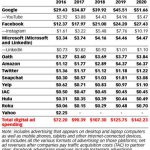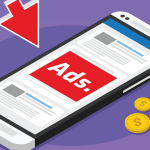‘Always On’ is at the heart of every ABM strategy — here’s why
For some it won’t be an easy transition, but contributor Sonjoy Ganguly says the days of campaign-based marketing are over.

As a B2B marketer, you are often caught trying to serve two masters: the need to drive engagement for specific campaigns or periods relative to the business vs. the overall goal to drive persistent ROI throughout the year. In any scenario, it’s becoming more clear that the “campaign” mentality no longer serves.
Even marketing’s cousin, advertising, has evolved. In the age of programmatic and audience-based, data-driven marketing, advertisers have already moved away from the campaign approach. “Always on” must be at the heart of every solid account-based marketing (ABM) strategy; a continuous messaging strategy is the key to targeted, well-developed content nurturing of your contacts inside any given account.
It is by taking an always-on approach that you are able to activate on the concept of the “customer journey” and map touch points, cadence, messaging, delivery and assets. This is not to say that specific campaigns cannot be overlaid within more of a hybrid play. But successful ABM begins with a more encompassing longer-term outlook. Here’s how the more robust strategy and plan play out.
Death of the campaign
The “campaign” is a familiar animal to all marketers. With its finite time frame, its focus is short-term success, performance against tactical KPIs and a general orientation around volume-based metrics, such as impressions, clicks, or even leads, with little regard for context or depth of analysis or accomplishment.
Trade up to a deeper marketing approach — one that is, for starters, “always-on” — and you’re already at a more strategic vantage point. Your KPIs, indicators of traction along the way, will have more depth and value to your business by pairing your high-level strategic imperatives with specific account-level metrics.
When you map the hierarchy and the weighted path to your accounts, nurturing them with the right messaging and content at the right time and in the right form, you are optimizing and increasing ROI for longer-term success, leaving the short-term (short-sighted) success checklist behind.
A more textured approach that has prioritized account-level activation, intelligence and optimization gets you closer to the quality and return on engagement that you seek, multiplying your opportunities, deepening and extending your pipeline.
This could be the difference between a strategy that relies on broadly-targeted display B2B advertising, a homogenous seasonal email campaign and marcomms mix — simply designed to coincide — and one that more thoughtfully delivers content assets of exactly the right composition and timing to key deciders within given accounts, over time, in the right channels, at the right time, with carefully honed messaging.
What’s next?
For example, let’s start to look at some of the most effective concepts of always-on campaigns you should be considering:
- Continuously engage all accounts, across multiple paid media channels, that have recently become closed/lost opportunities.
- Target accounts with new opportunities at the 20 percent probability stage, and the like.
These are powerful, constant tactics to continuously engage accounts based on the current and evolving relationship with prospective accounts.
In order to get here, you need to look into your waterfall to start to think about messaging. You will want to plan messaging strategies based on your waterfall.
Understanding your ICP (ideal customer profile), what’s important to them and the nature of their relationship with your organization are all important signals to inform your messaging strategy. This approach leverages paid media channels to bring account nurturing earlier into your waterfall, which adds a powerful tactic to your ABM arsenal to influence the accounts you need to. Gone are the days of the one-size-fits-all nurturing tactics. You need to factor your waterfalls into your nurturing strategy.
Making the transition
For many organizations, this will not be an easy transition (although it should be): budgets, timelines and KPIs all need to be processed differently. Too often, our budgets are broken down by campaign, but ultimately, our global budgets are tied to overall business objectives, and so should our initiatives.
This will require a shift in mindset within the entire organization, from management to marketing leadership and across the departments. But in the end, if you can show how an always-on messaging strategy (much like your drip campaigns), can lead to increased ROI, then a sophisticated organization should be able to adapt to the needs of today.
Opinions expressed in this article are those of the guest author and not necessarily Marketing Land. Staff authors are listed here.
Marketing Land – Internet Marketing News, Strategies & Tips
(22)














